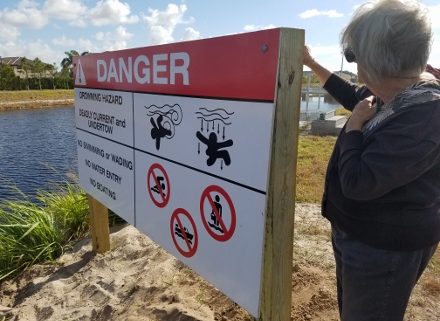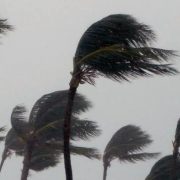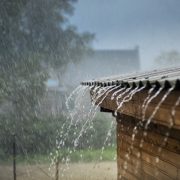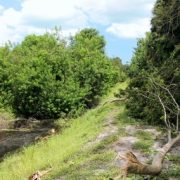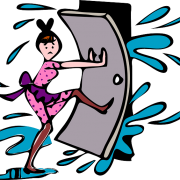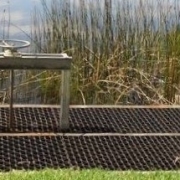Water Safety Around Drainage Canals
South Florida is an aquatic playground during hot summer months. The Lake Worth Drainage District’s canal system can appear to be an ideal place to cool-off and swim or spend a day fishing. However, it is important to understand that these inviting waterways can be dangerous.
District canals were not created for recreational use. They are designed to collect and convey stormwater to provide both flood control and water supply for residents and businesses within our boundary. Operation of this flood control system includes large water control structures which when opened can create a sudden change in a canal’s water elevation, as well as strong currents that may not be visible on the water’s surface. This current can catch swimmers and boaters by surprise. If close to an open structure, the undertow can create a strong enough force to pull swimmers and small boats under.
Canal rights-of-way do not have protective barriers, and banks may give way due to the soft sandy soil and rocks below. Once a person is in the water, it can be very difficult to climb out due to the steep side-slope of the canal bank. Depending on the time of day or location of the canal, cries for help may not be heard.
Many invisible dangers and submerged hazards exist in the canals like broken glass, scrap metal, bottles and cans, as well as wild animals. It is not unusual to see alligators, snapping turtles and snakes living in and near canals. Diving into a drainage canal is particularly dangerous because canal depths can vary significantly, and subsurface aquatic vegetation can tangle around extremities.
Stay safe and follow a few simple rules. Do not swim in a canal, instead head to the pool or beach. Keep a safe distance from the canal bank to avoid falling in the waterway. Always stay clear of water control structures. Visit the Drowning Prevention Coalition’s website for more water safety tips at http://discover.pbcgov.org/drowningprevention/.

